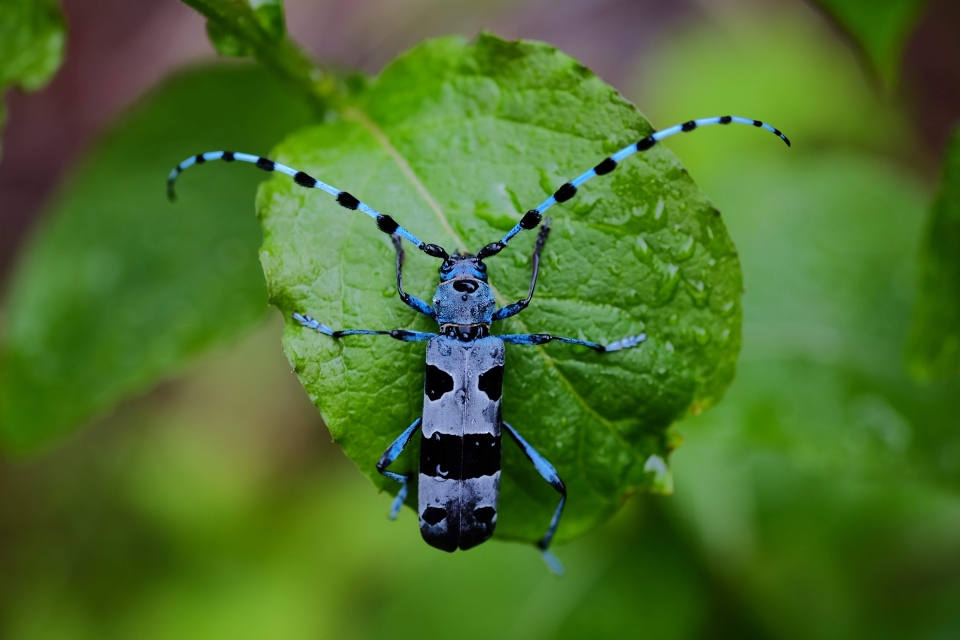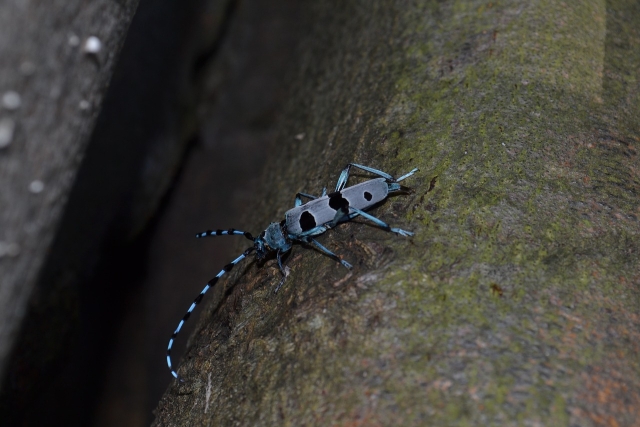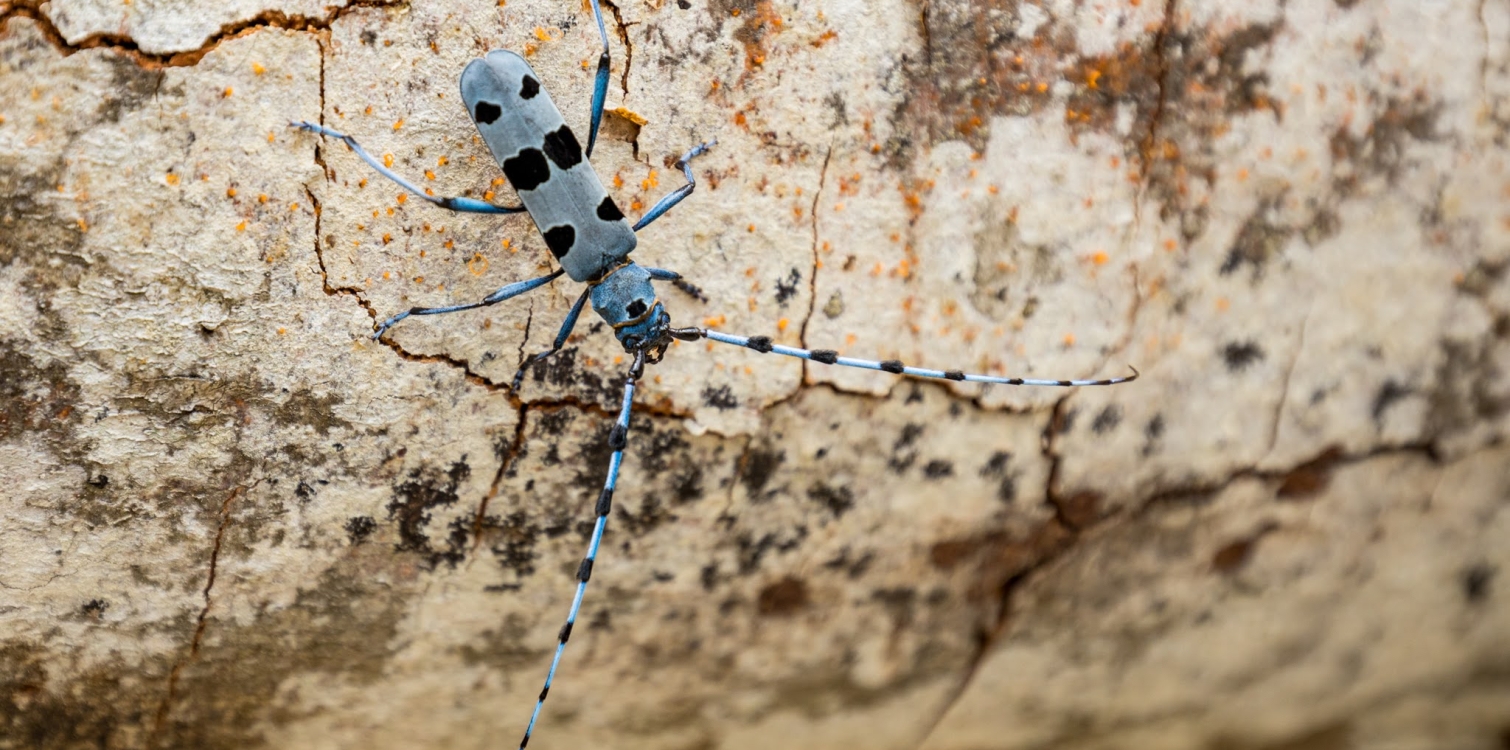
Rosalia longicorn (Rosalia alpina)
|
Size |
|
|
Diet |
|
|
Habitat |
|
|
|
|
| Kingdom |
|
| Phylum |
|
| Class |
|
| Order |
|
| Family |
|
| Genus |
|
| Species |
|
This rare and protected beetle grows from 15 to 38 millimetres long. Its grey-blue body is covered with hairs and there is a pattern of black spots on the body. It has three black spots on its wing covers, with the largest spot in the middle. There is also a black-and-blue pattern on its legs and antennae, which are twice as long as its body. The male has longer antennae than the female.
The Rosalia longicorn produces a sound similar to squeaking, which attracts females. After mating, the female lays her eggs in cracks in the bark, on logs, and decaying wood. The larvae develop inside the tree for three years before pupating, and then emerge as adult beetles in late spring.
The main threat to the Rosalia longicorn is the lack of suitable habitat due to intensive forest management. Beech trees are often cut down before they reach maturity, and dead wood is removed from the forest, which prevents the larvae from fully developing.

Source: Pixabay
DID YOU KNOW?
- Longhorn beetles are a large family of beetles, comprising around 35,000 known species today. The largest species can reach up to 15 centimeters in length, excluding the antennae.
- In Slovenia, more than 220 species of longhorn beetles are found. The largest among them is the great capricorn beetle or oak longhorn beetle. The most unwelcome species is the house longhorn beetle, which is notorious for damaging construction wood.
- These interesting beetles appear from June to September.
- They live for only 3 to 6 weeks, during which time they reproduce and eventually die.
- The adult Rosalia longicorn beetle feeds on pollen, plant sap and leaves, while the larva feeds on wood and bark.
Thank you.

